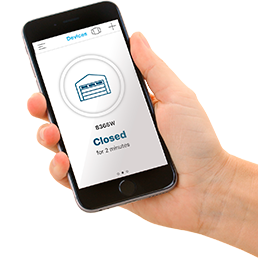Written by Jillian Day, www.508assist.org
Your home should be your haven, designed, built, or modified to accommodate you – not the other way around. If you have a disability or decline in functioning, you may realize what a challenge it can be to find one that is a 100% match, unless you start from scratch with a custom build. If you know what to look for, however, you won’t have to go the custom route; instead, look for a home with some of the required features, or one with a design that can readily accommodate the necessary modifications specific to your needs.
The Connecticut Tech Act Project (CTTAP) is available for individuals who can benefit from programs and tools that foster, increase, and enhance accessibility. Keep them in mind as you embark on your home search, and let them show you how increased access to Assistive Technology may help with accessibility and usability of your home and making it a welcoming visitable home for others who will appreciate accessibility considerations.
The right home for Aging in Place
A common accessibility consideration is for seniors and individuals with disabilities – or folks who are looking for their forever home – who would like to safely age in place for as long as their health and capabilities allow. Being able to stay in their homes as long as possible allows individuals to keep a familiar routine, which fosters continued independence. Also – critically important, especially as we are living longer – aging in place can save money, increasing the odds that the finances are available if or when a senior needs to move to a more intensive care facility.
seniors and individuals with disabilities – or folks who are looking for their forever home – who would like to safely age in place for as long as their health and capabilities allow. Being able to stay in their homes as long as possible allows individuals to keep a familiar routine, which fosters continued independence. Also – critically important, especially as we are living longer – aging in place can save money, increasing the odds that the finances are available if or when a senior needs to move to a more intensive care facility.
Look for a home that already has structural accessibility features, such as wide doorways and ramps. A one-story home eliminates concerns about navigating stairs later; any existing stairs, such as at the entrance, should have handrails and, ideally, non-slip tread. If you are contemplating a two-story home, be sure the first floor can accommodate everything you will need later to be independent, such as the laundry room.
Kitchen modifications can be expensive, so if you can find a kitchen that already has some of the features you need, that is a huge plus. One example is lower or roll-under countertops for individuals who use wheelchairs. And, if you will be updating kitchen appliances, look for ones that will accommodate your changing needs, such as a dishwasher with drawers for easy loading and unloading.
A bathroom with a walk-in shower is functional for all ages and stages and may only need a handrail installed later on. Shower benches are easy to place when needed.
When evaluating flooring, consider the pros and cons of various types. Low-pile carpeting can mitigate slipping, thus reducing the injury risks that often accompany falls. Non-carpeted surfaces, however, allow for easier navigation with walkers and wheelchairs but can increase your slipping risks, and throw rugs are usually not advisable for seniors as they can create a tripping hazard.
Naturally, as you’re factoring in all of these considerations – and adding them up financially – you are limited to what you can afford. For safety reasons, you should consider some of the features to be non-negotiable. Therefore, you may need to offset the accessibility requirements by selecting a neighborhood that offers you a home-buying market in your price range. Once you determine how much home you can afford, research the areas where you want to live, or would consider living in, to see what the average home is selling for.
Remember that markets can change, so it’s also worthwhile to look at trends and talk to your real estate agent about where they see the market going over the next several months (or even years if you can wait). They can also advise you on the best time of year that favors buyers versus sellers, and how to balance that if you are also selling a home to finance your new home purchase.
Other accessibility needs
Age isn’t the only accessibility consideration. If you or a member of your household has a visual impairment, you’ll want to consider how well your new home can accommodate the necessary modifications and safety measures. Fortunately, most of those can be relatively simple post-purchase modifications, such as bright lighting and grab bars, but purchasing a home that already has safe flooring and adequate handrails is a plus.
Autism-friendly homes are also gaining in popularity. If this is a consideration for you, you can fortunately make many of the necessary adaptations later, many of which are very affordable, like specific paint colors. Look for a home that allows for plenty of natural light. You will want to consider how sound travels throughout the home, both from outside noise sources as well as from room to room. The floorplan is also a consideration; narrow hallways are often problematic for individuals with Autism, as are rooms that are too small and enclosed. On the other hand, having a quiet room to go and sit against the wall, or even swing and bounce, may be needed.
For Deaf individuals or those who are Hard of Hearing, having a floorplan that allows for easy line of sight for American Sign Language (ASL) or other visual cues makes communication easier. Lower ceilings work better than higher ceilings, and outside noise can be very distracting for individuals who use an assisted hearing device, particularly if there is a great deal of traffic outside the home. Unless it is already installed, you may want to modify the home with acoustic flooring that helps insulate impact noise, like footsteps or from dropped objects.
Technology in your favor
We are fortunate to live in an era of increasingly advanced technology that has become more affordable, and that can increase a home’s accessibility for varying needs. Home security systems, for example, benefit all populations, but those with cameras are especially helpful for hearing impaired individuals or individuals with mobility disabilities. Video monitoring systems allow loved ones, both within the household and out, to monitor those living in the home who may need an extra watchful eye to ensure their safety and wellbeing.
“Smart home” technology has also advanced. We’ve moved from helpful features such as programmable thermostats and auto shut-off on small appliances to voice-controlled AI (artificial intelligence) technology for appliances and electronics, temperature, home and car locks, and lighting. Some systems can even provide users with weather and traffic conditions to help make better decisions about when to leave the house.
Creating customized accessibility is easier than ever
You no longer have to build a custom home from the ground up in order to gain the accessibility you need to live longer, and better, in your home.


















